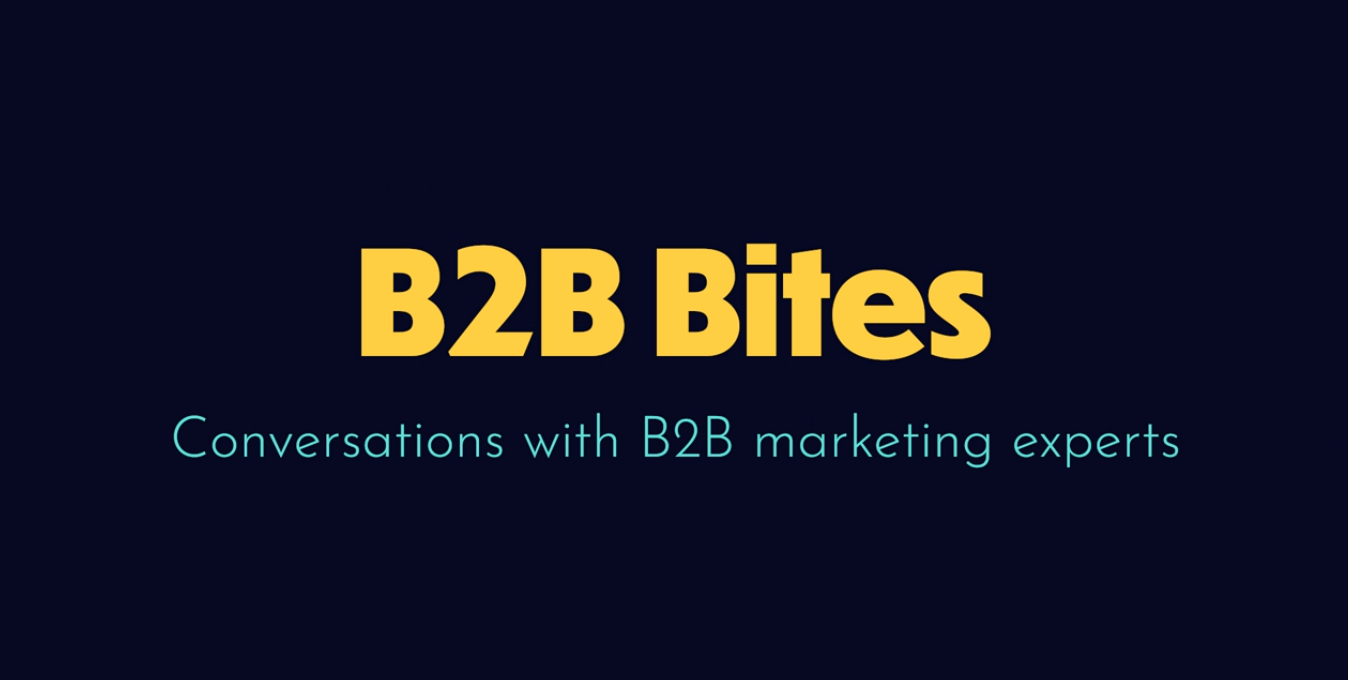B2B marketing strategy is kind of like a unicorn - no one is really quite sure if it exists, but everyone wants one. (Not to be confused with Larry Kim’s Unicorn Content Marketing idea - which focuses on repurposing your best content in order to replicate prior successes.)
In the Squaredot Irish B2B marketing survey - the results of which are forthcoming - ‘strategy’ emerged as something our respondents were interested in reading more about. But while everyone loved the idea of having an all-singing, all-dancing marketing strategy, they weren’t really sure if they had one; how to get one; or if it what currently constituted their marketing strategy was working for them.

One of the places where marketing strategy is easiest to implement is via social media. For many organisations, social media strategy includes producing content and pushing it out across all their platforms. Then they monitor replies, likes, comments and shares. This enables the company to build up a picture of what content works best for creating the engagement they desperately crave. While this kind of proactive monitoring is valuable, one area of social media that is underutilised in the B2B space is social listening - and that’s a topic that we wanted to delve in to deeper.
How B2B marketers are using data mined from social accounts
A person’s social media activity represents a vast, qualitatively unique source of public information which can inform better-targeted marketing. From signals as obvious as a tweet referencing a relevant product niche, to more abstract variables like the user’s political beliefs or dietary choices, marketers can - and do - use just about anything people post to understand them better as prospective customers. This prospective treasure trove of data is a key reason to make social media - such as Facebook - part of your B2B marketing strategy.
What types of data can marketers derive from a person's social activity?
As Brandwatch excellently puts it, social data is qualitative data on a quantitative scale. It offers rich insight into people’s lifestyles, preferences and interrelatedness, across up to 42% of the global population (the figure is far higher in highly developed regions). By comparing these findings with insights from their customer/marketing activity data, the marketer can draw conclusions about who to target with their marketing, and how best to reach out to each lead.
A commonly cited shortcoming of research on social media is the under-representation of certain demographics on particular social platforms - but the concentration of certain age groups on particular social channels represents an opportunity to use those platforms to connect with leads. Your ideal target might be frustratingly absent from Facebook – but in that case, you may well find them on Instagram instead.
Social listening = data mining
The most accessible approach to gaining actionable marketing insights from social account activity is the technique known as social listening. In the simplest terms, this means the use of software (we recommend you check out Mention) to monitor mentions of certain keywords, brand names, phrases and combinations of the aforementioned on social media. (It’s presumably how James Blunt hears about it when someone uses his name in vain on Twitter.) Social listening sounds far gentler than data mining, but in truth it is a highly developed version of the same thing. Marketers use it to mine the most relevant data from every publicly available post on whichever social platform you like.
Why would B2B marketers be interested in individual data and not just business data?
The more you know about the individuals and demographics you are targeting, the more accurate and effective your marketing can be. Social listening can work especially well for B2B marketers seeking high-value leads with extremely specific interests. Let’s say you’re selling your services as… a golf course agronomist. The chances are that if someone is posting about this particular subject on social, they may well be interested in your services in some way, shape or form. Listening in to related keywords could therefore become a valuable way to identify leads and networking opportunities.
AI is analysing you on social media for market research
While social listening alone can be a good source of marketing intelligence, the assimilation of AI into the process can generate insight at a far greater scale. Typically, it would work like this:
- The application parses the text from the user’s social posts;
- It applies a machine-learning algorithm to the social data, in order to derive insights about the user. The more times it does this, and the greater the overall volume of user data processed, the more accurate it can become;
- Dynamic marketing (with elements that change according to user variables) can be delivered to the user based on the insights created in the previous step, OR, the most suitable users can be progressed into a marketing funnel.
The benefits, from the marketer’s perspective, include a reduced manual analysis workload, a faster flow of actionable insights, and the potential to analyse higher volumes of data. Artificial intelligence also has the potential to derive customer insights that human agents would struggle to spot – especially where the relatedness of multiple variables isn’t obvious. As humans interpreting data, we’re generally inclined to gravitate towards familiar patterns and processes of deduction. AI can analyse all data equally, at tremendous speed and in immense volume, thereby spotting trends mere mortals would miss.
Complement your B2B social media strategy with social listening & AI
If your company is yet to adopt account data mining as part of its B2B social media strategy, consider this article as a roadmap on how to do so, growing in sophistication as you go along. Start by implementing social listening as part of your Twitter strategy, via a tool like Mention, to gather high-value leads. As you become proficient, you can extend the process to the other social media platforms.
Once you’ve nailed social listening, consider moving on to AI-assisted interpretation of your leads’ social account activity. You’d be following in the footsteps of a growing number of B2B companies using social data to power smarter marketing, some of which are becoming highly sophisticated in their approach.
We’ll give you an example. One of the Squaredot team recently received an Instagram ad for a work organisational tool. The marketers - or algorithm - behind the ad determined that the employee could be interested in this type of work software, and might somehow be able influence Squaredot’s decision to purchase this product.
Whether an algorithm, savvy marketer, or sheer coincidence was behind the placement of this ad, what it demonstrates is an understanding of how decisions are made within an organisation. Casting a net among an organisation’s employees leverages stakeholders’ influence within their team, working on the assumption that they will make suggestions, get asked for input, or simply talk shop around the water cooler. All of this is done in the hope that, should the company be in the market for a new work organisation tool, the name of the company behind that ad in an Instagram story, will be resurfaced in an in-office discussion.
The importance of social media is ultimately that it is a huge repertoire of data that can be leveraged to produce highly targeted ads to certain demographics. Among those audiences will be the people you want to buy your B2B products and services - meaning there's no such thing as a social media platform where B2B marketing can’t potentially be effective.









